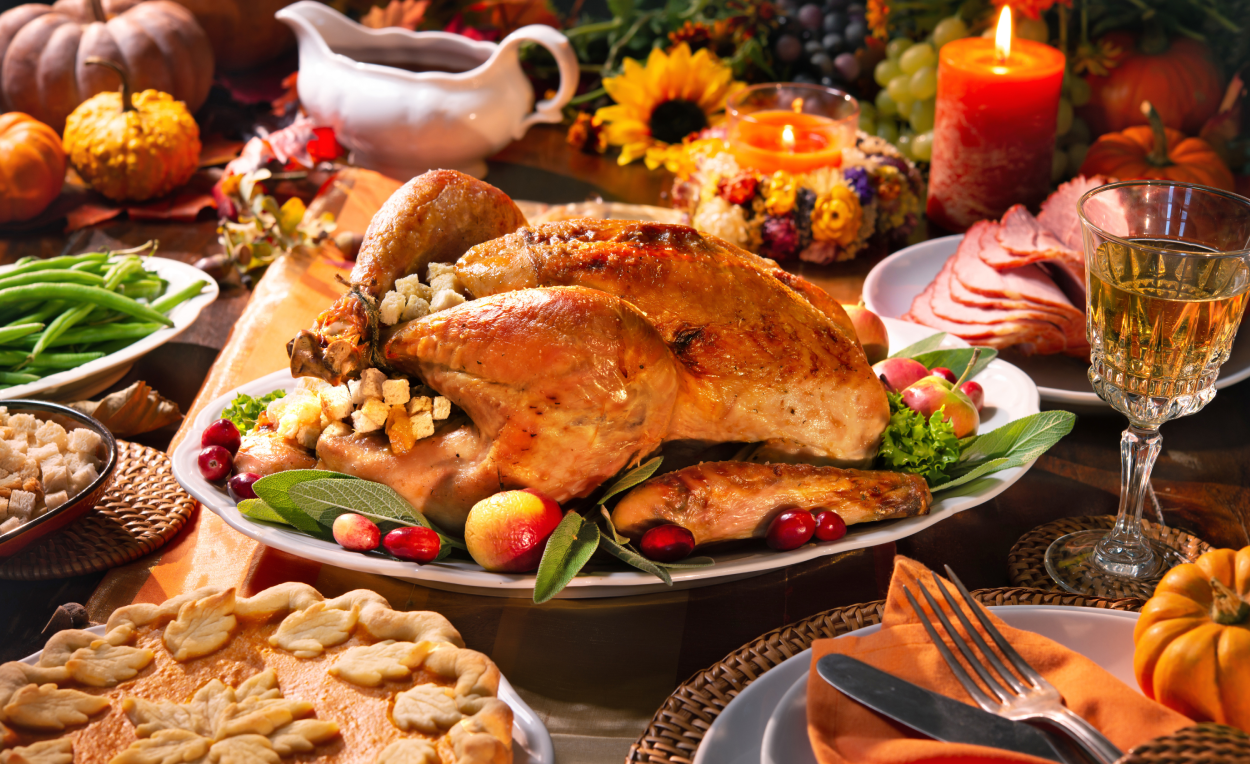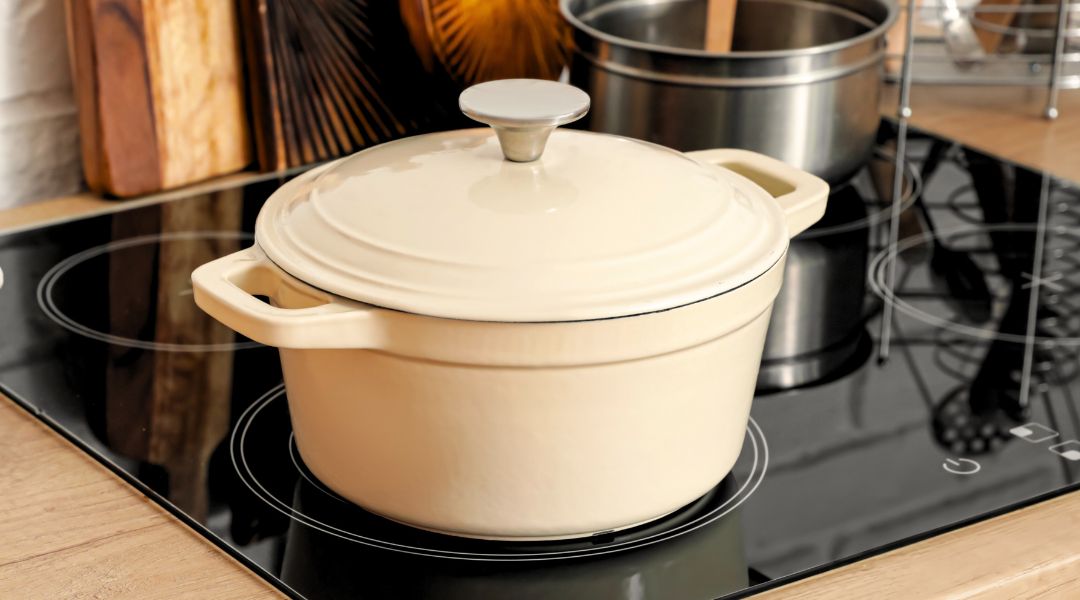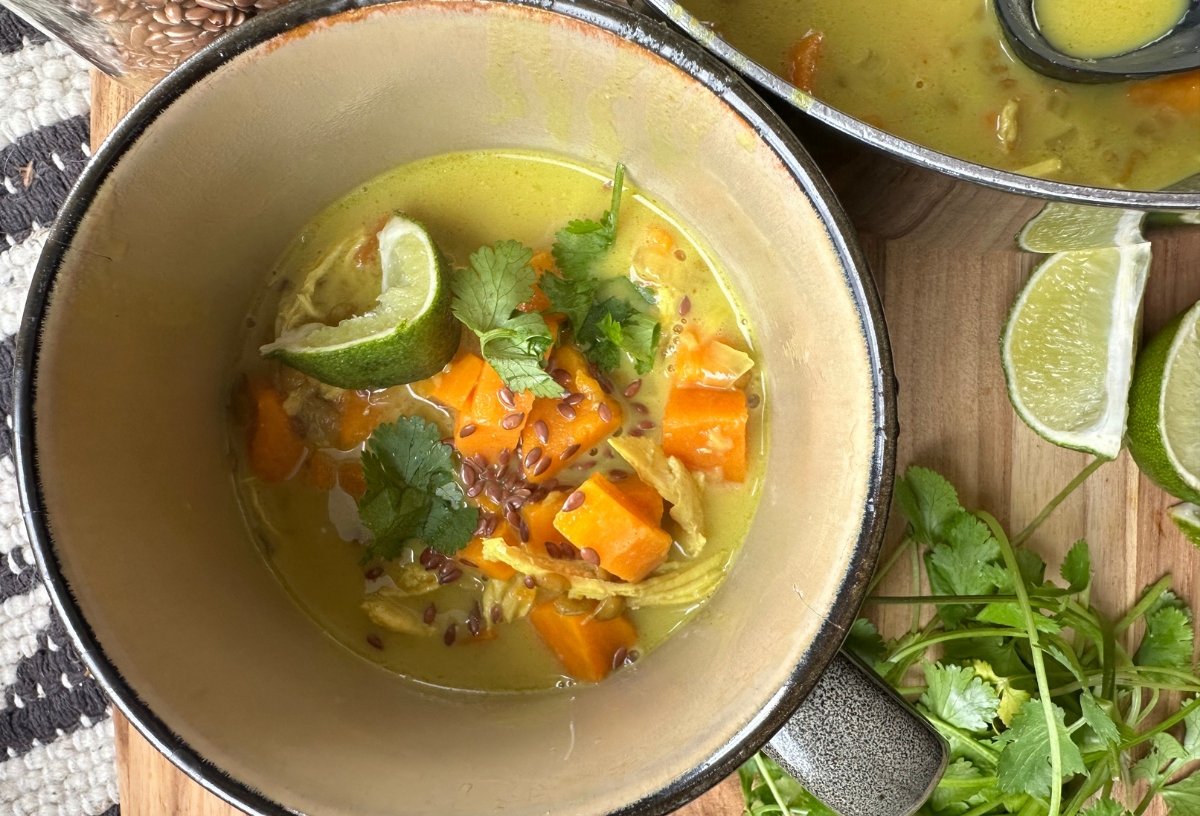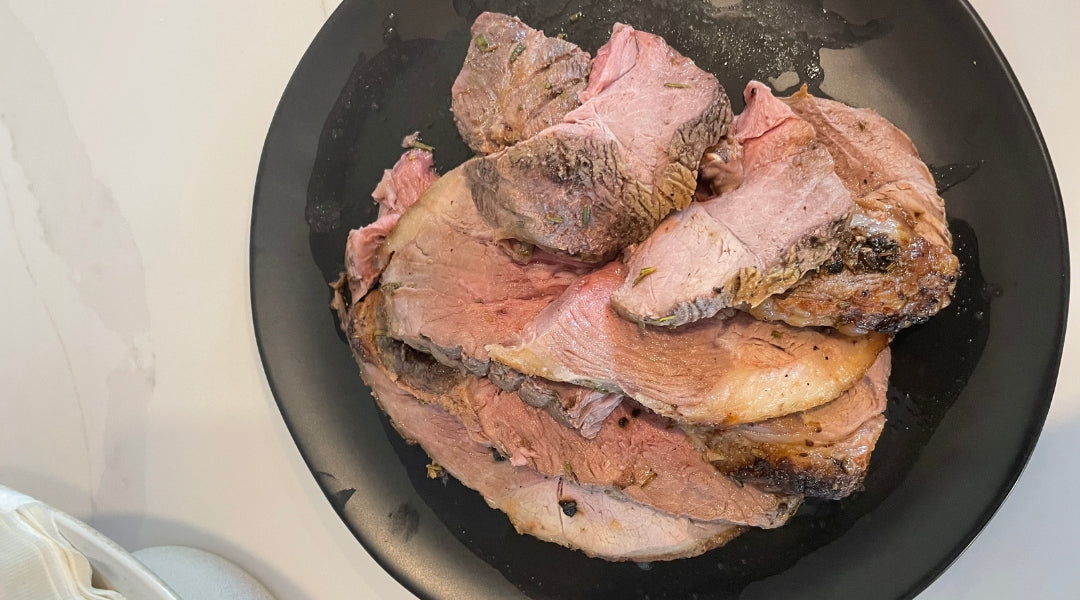Turkey Internal Temperature: When is it Done?

Maybe this is your first year hosting Thanksgiving, or maybe you’ve done it a dozen times but never been FULLY impressed with your results.
Whatever your turkey needs, we want to help you avoid one of the most common mistakes home chefs make time and time again: Going over or under the ideal cook time.
Knowing what temp to cook turkey is essential, whether you’re roasting a whole Thanksgiving turkey or cooking a lean turkey breast for a healthy weeknight dinner.
Below, we’ll cover:
- What internal temperature to cook turkey
- How to check turkey temperature
- How to know if turkey is cooked without a thermometer
- Whole turkey temperature
- Turkey breast temperature
- Ground turkey temperature
- Plus! Get our Tried & True Herbed Turkey Roast recipe.
What internal temperature to cook turkey
All turkey cuts should be cooked to an internal temperature of 165°F.
We’ve got a handy turkey temperature guide below, with instructions to ensure an accurate temperature reading every time.
But before we get to that, it’s helpful to understand why cooking turkey to an exact temperature matters so much.
Why turkey must always be cooked to 165°F
1. Eliminate bacterial pathogens
Raw poultry, including turkey and chicken, can contain harmful bacteria like Salmonella and Campylobacter. These bacteria can cause foodborne illnesses that we’re all susceptible to, but especially children, the elderly, and immuno-compromised people.
Ensuring turkey has reached the right internal temperature kills these pathogens, which makes the meat safe to consume.
2. Improved flavor and texture
Undercooked turkey can be tough and unpleasant to eat and risks the foodborne illnesses we mentioned above.
On the other hand, overcooked turkey is generally quite dry and loses almost all flavor.
When you cook your turkey to the appropriate temperature, the texture and flavor delivers a succulent and delightful dining experience.

How to check turkey temperature
Follow these 7 tips to accurately check the temperature of your turkey.
1. Get a digital meat thermometer.
An instant-read, digital thermometer is the most reliable tool.
2. Insert the thermometer into the thickest part of the turkey.
But make sure you’re not touching the bone. For a whole turkey, the right placement is usually the thickest part of the thigh meat or breast meat.
3. Avoid fat.
In addition to avoiding bone, also make sure the thermometer is not touching any fat, which can lead to an inaccurate reading.
4. Check multiple areas.
This mostly applies when cooking a whole turkey. It’s wise to check the temperature in a few spots to really be certain that you’ve achieved uniform cooking.
5. Never deviate from USDA cooking guidelines.
Recommended internal temperature guidelines for turkey are critical for food safety and enjoyment. Make sure the thickest part of the turkey has reached 165°F (73.9°C) before removing the bird from your heat source.
6. Also temperature check your stuffing.
If cooking a whole turkey that’s stuffed, make sure the stuffing also reaches 165°F (73.9°C) for safety.
7. This may seem obvious, but… Use an oven mitt!
In the comfort of your own home, it’s easy to forget to be cautious when placing or removing turkey from the oven, or when reaching toward a hot pan to check the temperature of the meat. Please take extra care and use an oven mitt to handle both the pan and the thermometer safely.
How to know if turkey is cooked without a thermometer
Attempting to determine turkey doneness without a thermometer is NEVER our recommendation. We really can’t say that enough.
Using a thermometer is the best way to ensure turkey is safe to eat.
Having said that, if you’re determined to go it alone, here are a few things to consider:
1. Color
When properly cooked, turkey should have a golden-brown color that appears evenly across the outside.
However, relying solely on visual cues is a big risk. Turkey can be golden-brown on the outside and still be undercooked inside. The only solution? You guessed it: a meat thermometer.
2. Juices
Cut the thickest part of the turkey with a knife or pierce it with a fork. If the juices are clear and have no pinkness whatsoever, that’s a good sign that the turkey is likely cooked.
Although, it’s important to know that just like item #1 on this list, this method is not a guarantee on its own. Some well-cooked turkeys can still have slightly pink juices.
3. Movement
If cooking a whole turkey, try moving the turkey leg. If the joint feels loose and can move fairly easy, that usually indicates the turkey is cooked.
4. Texture
Try to pierce the turkey. If a fork can go in relatively smoothly and the meat feels tender, it might be done.
Please keep in mind that none of these methods are foolproof.
When it comes to cooking turkey that’s 100% safe to eat, nothing comes close to a meat thermometer.

Whole turkey temperature
Check the internal temperature in multiple spots, but the most important one is the thigh because this is the thickest part of the turkey. Once the temperature has reached 165°F (73.9°C), your bird is safe to eat.
Check out our Guide to Everything Turkey, which includes our best tips for roasting a turkey, how to do a wet or dry brine, and more. And our Tried & True Herbed Turkey Roast Recipe is included!
Turkey breast temperature
Though it’s a much smaller cut than a whole turkey, it’s still important to test the internal temperature of your turkey breast at the thickest part of the breast.
Again, 165°F (73.9°C) is the magic number.
Note: Even if you sear the turkey breast before transferring it to the oven for final cooking (this process typically requires a minimum of 30 minutes), the initial searing step does not change the need to achieve an internal temperature of 165°F (73.9°C).
Ground turkey temperature
If anyone ever asks you, “What temp is turkey done?” you can tell them that 165°F (73.9°C) is the only number to worry about, no matter what cut of turkey they’re cooking.
Our Sweet Peppers Stuffed with Ground Meat and Zucchini recipe is equally delicious if you swap the ground beef for pasture-raised ground turkey. Give it a try!
And if you’re not entirely sure why pasture-raised turkey is any better than conventionally-raised turkeys, please make sure to check out our quickstart guide to all things pasture-raised meat. It’s a short and sweet read that’ll catch you up in a flash!
Learn more about the benefits of pasture-raised meat.
Utensils
Recent Posts



 Tender and succulent, it's the perfect centerpiece for any holiday feast, elevating your meal with its exquisite taste and elegant presentation. Delight your guests with this sophisticated dish, sure to leave them craving more of its indulgent perfection.
Tender and succulent, it's the perfect centerpiece for any holiday feast, elevating your meal with its exquisite taste and elegant presentation. Delight your guests with this sophisticated dish, sure to leave them craving more of its indulgent perfection.



